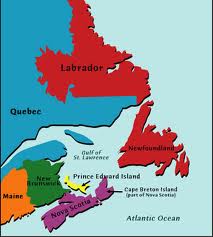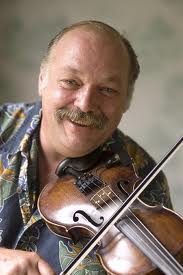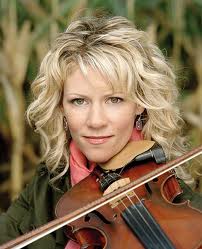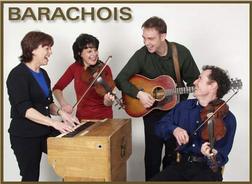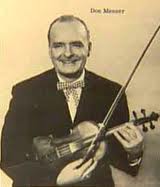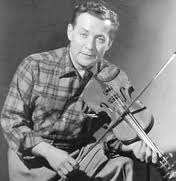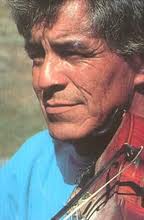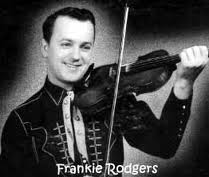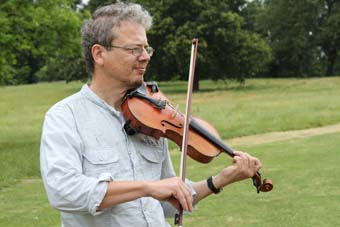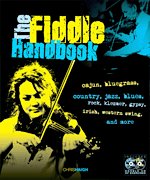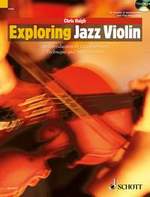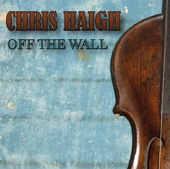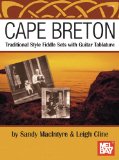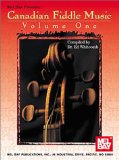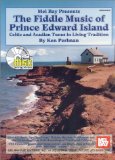
MENU TO FIDDLE STYLES:
Canadian Fiddle
I’ve been researching into different fiddle styles for many years now, and this website has been up for a decade or more, but I have to admit that Canadian Fiddle has always been low down on my list of priorities. Two things have changed that. I was asked a while back by the Canadian Embassy in London to provide some solo fiddle for a function there. Since I’d admitted I didn’t know many Canadian fiddle tunes they sent me a few cd’s, including something by a band from Quebec called La Bottine Souriante. Rarely has an album so surprised, delighted and inspired me as that one! I’ve also had, over the years, a steady stream of emails from Canadian fiddlers demanding, in the politest possible terms, to know why their great nation was not represented in my ramshackle website alongside all the US, Celtic and east European fiddle traditions. So here we go!
The Origins of Canadian Fiddle
Canadian fiddling has many branches, but three main roots; Scotland, Ireland and France. Across Canada these traditions have been mixed in different ways, and spiced up with contributions from native and mixed (metis) peoples, English, Ukrainians and Americans, to give an incredibly rich and diverse tapestry of fiddling.
Fiddling in the Maritime Provinces
They may a tiny area perched on the eastern edge of Canada, but the Maritime Provinces of New Brunswick, Nova Scotia and Prince Edward Island are the heart and wellspring of Canadian fiddling. These were the first parts to be settled, in the early 1600’s, and since they have remained relatively poor, rural and isolated, they have had every opportunity to develop mature and distinctive fiddle styles.
Fiddling on Cape Breton Island
Cape Breton, the North Eastern part of Nova Scotia, is widely seen as the heart of Scottish fiddling in Canada, and has a particularly important place in that tradition. It was established between 1800 and 1850 with the arrival of around 25,000 Gaelic-speaking Scots- refugees from the infamous Highland Clearances. This was before the era of Scott Skinner changed Scottish fiddling for ever in the late 19thC, adding a strong and to some people unwelcome dose of classical technique, generally cleaning up and gentrifying what was previously a much more gutsy and raw style of fiddling. Unlike in Scotland, fiddling has also maintained its roots in step-dancing as well as square-dancing, and generally the style can be seen as a “living fossil”- a unique preservation of true Scottish fiddling. Alasdair Fraser, in the notes on his 1998 “Driven Bow” album, contends that “Fortunately the fiddle and dance traditions of Cape Breton…provide us with a window which sheds light on the way 18th and 19thC dance fiddlers such as Niel Gow used to play in the Highlands of Scotland…let’s hope that some of the great fiddle and dance tradition that has been absent from Scotland for so many years can be restored”
The chief environment for fiddling in Cape Breton was and remains the house dance- an informal gathering for music, dancing and partying. Unlike in the US, contest fiddling never really took hold, partly because individuality of style and performance has always been valued in Cape Breton, rather than striving for a single ideal. Where fiddlers gather together, they tend to take it in turns to play rather than, as in the typical Irish “session” all playing in unison. “Sets” or groups of tunes are also usually improvised on the spot, often all in the same key, unlike in many other traditions when the same sets are widely and repeatedly played. For sets in the key of A, the tuning ADAE is often used, allowing for a bagpipe- like drone.
The typical set will consist of an air, a march, a strathspey and several reels. Before 1900 there was usually no accompaniment. The pump organ was then introduced, followed by the piano from around 1930; with a driving and syncopated style this has now become a strong and important part of the musical tradition. Even in an isolated and close-knit community like Cape Breton traditional music was not safe from the corrosive effect of commercial entertainment, and by the 1960’s fiddling was seen to be in decline. A 1971 CTV documentary by Ron MacInnis, “The Vanishing Cape Breton Fiddler” highlighted the potential loss of this valuable piece of musical culture, and the community was galvanised to do something about it. The Cape Breton Fiddler’s Association was formed, The Glendale Festival established in 1973, followed by a “ceilidh trail and, in 1997, the Celtic Colours International Festival. Traditional music is now seen as a dynamic and profitable industry, and signs throughout the Island proclaim it as “The Home of Celtic Music”.
An excellent source of tunes from the Cape Breton repertoire is the Cape Breton Musical Heritage series, by Cranford Publications, so far including over 200 tunes!
Cape Breton Fiddlers
Until the recent revival, fiddling had always been an amateur pursuit. Typical of the older generation of fiddlers was Dan R MacDonald (1911-76) who is credited with composing over 1,000 tunes; because he learned to read and write music, he was able to publish them. Bill Lamey (1914-91) lived much of his life in Boston, but established an outpost of Cape Breton life there, becoming President of the of Cape Breton Island Gaelic Foundation, promoting visits from fiddlers to Boston, where he ran regular dances. Jerry Holland (1955-2009) began playing at these dances, going on to perform regularly on the John Allen Cameron TV show, and publishing several collection of tunes. Though not a native, he lived on Cape Breton from 1975.
Buddy MacMaster (1924-2014) was born into a Gaelic speaking family and the lilting of “mouth music” was his first introduction to the tunes played in Cape Breton. It is said that there is a strong link between the language and the true Cape Breton fiddle sound. Before he was given his first instrument as a child he would rub two sticks together in imitation of a fiddle. From 1943 he worked on the Canadian National Railway as a station agent and telegrapher. When working the night shift he would practice his fiddle between trains, and other agents would often tune in their radios to listen to him. Whilst he was a popular fiddler at dances for many years, it was not until later life, from the 70’s onwards, when he got the international recognition he deserved. He played in Scotland and England and in the US, and appeared on TV, radio and on albums.
Buddy’s niece Natalie MacMaster, born in 1972, had the benefit of much wider musical opportunities from a young age. As well as fiddling, she was singing Gaelic, step-dancing and playing piano from an early age. She was already recording and performing in her early teens, and in 1995 signed to Warner Brothers. Her good looks, charm and sunny personality, along with her simultaneous fiddling and step-dancing, made her an ideal figurehead for Cape Breton music in the wider world. Her 2002 album Blueprint was produced by fiddle maestro Darrol Anger and, with an interesting twist to her Cape Breton/Scottish roots, used some of America’s finest bluegrass players (they don’t come much better than Jerry Douglas, Sam Bush, and Edgar Meyer!). Her albums draw on a variety of “outside” influences but remain very much rooted in the jigs, reels, strathspeys, airs and hornpipes of her native tradition. Typical of the welcome and generosity of that tradition is that on her website you will find free sheet music to most of the tunes she has recorded. She is married to fellow fiddler Donald Leahy, and though they have two separate musical careers they are often able to guest with one another’s bands.
Jerry Holland
Natalie MacMaster
Mi’kmaq fiddlers
Whilst the Gaelic speaking Scots of Cape Breton tend to get all the glory when it comes to fiddling, there are other influences at work both on Cape Breton and on the Nova Scotia mainland. The First Nation of Nova Scotia and much of north eastern Canada are the Mi’kmaq (sometimes known as the MicMac). In common with natives throughout Canada, they took readily to the fiddle when the first settlers arrived, picking up repertoire from the Scottish, French and Irish traditions. A popular childhood game among Mi’kmaq fiddlers is to match words from the native language to the opening bars of fiddle tunes, as an aide memoire to learning them- the effect is similar to Gaelic mouth-music. Whilst the repertoire is largely borrowed, the Mi’kmaq style of playing is distinctive, with a strong rhythmic influence form the native singing style. Wilfred Prosper and the late Lee Cremo are among the best known contemporary Mi’kmaq fiddlers. Both appeared on Aly Bain’s Down Home TV series.
Acadia
The French were among the first European settlers in the Maritimes, arriving in large numbers in 1624 in what is now Nova Scotia and New Brunswick. They named the area Acadie or Acadia, with the capital as Port Royal in Nova Scotia. They brought with them a string tradition with instruments including rebecs, vielles and fidels- all precursors of the violin, then in its infancy in Italy. The French remained in Acadie until 1755 when the long-standing struggle with the British led to Le Grand Dérangement; the expulsion and dispersal of all French speakers who refused to swear allegiance to the British crown. Many ended up in Louisiana, becoming known as the Cajuns, and establishing their own highly distinctive musical culture. When we refer to Acadians, it is these displaced French speakers from the Maritime provinces, rather than the Quebeqois.
Prince Edward Island Fiddlers
North of Nova Scotia, amid the warm waters of the Gulf of Saint Lawrence, lies Prince Edward Island. Here there is more of a mixture of cultures than in Cape Breton, with a surviving Acadian influence as well as both Scottish and Irish peoples. Among the finest Acadian fiddlers on the island was Eddy Arsenault. The great drive and subtle accents in his playing were typical of the Acadian style. Two of his children, Helene and Louise Arsenault formed a successful band Barachois which, in keeping with local practice at parties and ceilidhs, include humorous skits based on local characters, as part of their musical act. Richard Wood has brought PEI fiddling to an international audience, not least with his collaboration with Irish music ambassadors The Chieftains.
Irish Fiddling in Canada
Mass immigration from Ireland to the Maritime provinces began in the early 1800’s. By the 1870’s around 35% of New Brunswick (especially in the Mirimichi area), 25% of Prince Edward Island, and 15% of Nova Scotia were Irish. Newfoundland, in particular, has a large Irish population; it has been called "The most Irish place outside Ireland", and is unique in that the majority of its Irish settlers arrived before the great famine. Asymmetry or crookedness is a feature of many Newfoundland tunes, even those of Irish origin; Maggie in the Woods, for example (described as THE Newfoundland tune), is played with the addition of an extra beat between the A and B sections.
Irish traditional music has been encouraged in many parts of Canada through the efforts of many branches of Comholtis Ceiltori Eirran, the Irish trad music society. Irish tunes have been assimilated widely into both the English and French speaking communities.
New Brunswick
Like Prince Edward Island, New Brunswick has a combination of Acadian, Irish and Scottish settlers; it is officially bilingual, with a correspondingly varied fiddle tradition. It was home to what was probably Canada’s most famous and influential fiddle player, Don Messer. Born in 1909, he began playing at the age of 7, and studied violin for three years in Boston. Returning to Canada in 1929 he formed The Backwoods Trio along with guitar and bass; this eventually expanded into a large western swing style band. From 1939 he worked on a big radio show in Prince Edward Island; by 1944 he was playing on national CBC three nights a week with his band The Islanders. Most importantly, in 1959 he began a long run of The Don Messer Show on CBC TV, which made him a household name in Canada and enabled him to do 18 sell-out national tours. His playing style became known as “Down East” or simply “Messer Style”; it was straightforward, toe-tapping music with relatively little ornamentation, and incorporated elements of style and repertoire from many different regions; it established what to many became a National "Canadian Old Time" style. The show ran till his death in 1973, featuring Maritime folk music, country and old time. His playing on the show was an inspiration to a whole generation of fiddlers, many of whom were invited on to the show. One such player was Frederick “Ned” Landry, born in 1921. Messer gave him one of his first breaks playing harmonica with his New Brunswick Lumberjacks, but it was as a fiddler that Landry became famous, leading a succession of dance bands and eventually recording 30 albums. His biggest hit was one of his own compositions “Bowing the Strings” a breakdown featuring the Nashville shuffle in the A section, and a double shuffle in the B. Another New Brunswick fiddler was Earl Mitton, also a protégé of Don Messer. He filled in for Messer when the older man was off touring, and eventually hosted his own TV show. He wrote many tunes which have become standards, including one of my favourites, the B flat reel Mitton’s Breakdown, with a driving double shuffle in the B section.
Don Messer
FIDDLING IN QUEBEC
Quebec is the largest Canadian province, being approximately three times the size of France, and it has a predominately Francophone population. It was settled the French in the early 17thC, and was named New France. At the battle of The Plains of Abraham in 1759 the French were defeated by the British; it then became Quebec, a province of Canada. Unlike in Acadia the French were not expelled, but remained as part of the British Empire.
In Quebec the French musical tradition was mostly vocal, but the Quebecois soon adopted the fiddle, and began to incorporate a repertoire which included many Irish tunes; over a million Irish moved to Quebec in the mid 18thC, not least because of the potato famine. Many tunes regarded as Quebeqois, and with French titles, are actually renamed variations of Irish tunes. The Scots had a similar but lesser influence in Quebec. There are several distinctive features to Quebeqois fiddling. Perhaps the most striking and unique is that most fiddlers play sitting down, and use both feet to provide a tapping accompaniment, both heel and toe. The standard rhythm for a reel would be “duck-a- dum, duck-a- dum”. The AEAE tuning is often used, for tunes in A, perhaps an inheritance from the vielle or hurdy gurdy; it is often referred to as "en vielle". For D tunes ADAE (Grondeuse or growler tuning) or ADAD may be used. AEAC# is also used, notably on Le Reel de Pendu (the hangman’s reel). Retuning is referred to as Dismantling.
Quebeqois fiddling for dancing was mostly done solo, with one musician taking over from another when he got tired. As a result, fiddlers were free to improvise and come up with their own variations on the spot. Originality has become a prized quality for Quebeqois fiddlers. The nature of the dancing often did not require any particular phrase lengths, just a steady beat. This has allowed various rhythmic eccentricities to creep into the music. According to Hart and Sandell, most tunes have at least one of the following characteristics:
1. They have more than 2 parts; 2. Parts can be longer or shorter than 8 bars; 3. Parts may be repeated more than twice, or not at all; 4. There may be extra or missng beats.
The repertoire includes many reels, marches and 6/8 tunes. The latter are not called jigs (or gigues), this being a general term for a tune used for stepdancing. The Valse Clog is a fast waltz popularized in urban areas at the start of the 20thC. The Galope is a type of reel used to accompany the quadrille, often the final part of a dance set. Remnants of the old French repertoire of the 17th and 18thC include tunes like La Bistringue, La Danse du Barbier, and St Malo (also called Four Corners; during this tune the bow is tapped on each corner of the fiddle). The structure of tunes was traditionally looser than in Celtic music, often straying outside the standard 32 bars; this is because dancers have less tendency to follow the phrasing of tunes. This “eccentric” timing has declined markedly with the advent of recording, but crooked tunes are still not unusual. One of my current favourites, Michel Bordeleau’s Fleur de Mandragore has an odd half bar at the start of the B section. Some tunes have a mixture of time signatures, such as Le Brandy, Le Bateau or La Grondeuse
Perhaps the most famous Quebeqois fiddler of the 20thC was Jean Carignan(1916-88). Also known as Ti-Jean, he is best known for his use of classical technique to augment traditional playing. Although he never had lessons, he adopted many classical techniques, particularly for bowing, which he integrated seamlessly into his playing of reels and jigs. He saw Heifetz play and said, in reference to the flying spicatto bowing, and “the way he was taking the bow, I’m going to take it like that from now on!” He also used stacatto, pizzicato and dazzling 16th note runs, developing his own variations on French, Irish and Scottish tunes, much in the way that Sean McGuire did in Ireland. He was also greatly influenced by the early recordings of James Morrison and Michael Coleman. He had a huge repertoire- covering perhaps 7,000 tunes. Despite his prodigious technique he was not, unlike McGuire, a deliberately “flashy” player; he avoided going out of first position because it would spoil the character of the music; “if you’re playing a jig up in 4th or 5th position, it doesn’t sound like folklore anymore”; and he treated the tunes he learned from Coleman and Morrison with great respect. He had less respect for the “crooked” aspect of the Quebeqois style - he once referred to it as “Irish music played badly!” Inevitably his playing raised the hackles of many traditionalists, considering his embellishments to be inaccurate and inappropriate. Nevertheless he was widely revered. Fiddler Jean-Marie Verret (in an interview for Fiddler Magazine by Guy Bouchard) said;”I was not a big fan of his, but the first time I heard him play up close in a small room had to go out of the room…it was so beautiful that it was impossible not to cry! That has never happened to me again, with anybody!” He became a friend of Yehudi Menuhin, and in 1974 he was made a Member of the Order of Canada as "the greatest fiddler in North America” Another famous Quebeqois fiddler was Isodore Soucy . Born in 1899, he was around at the start of the recording industry and by the 1930’s was a star due to his many radio appearances. He was known for his work on the nostalgic variety show “Vielles du bon vieux temps”. He eventually formed a family band “Famille Soucy”. He had a TV show in the 60’s, and in his lifetime recorded over 1200 tunes.
The Magdalen Islands are a tiny archipelago in the Gulf of St Lawrence which maintain strong Acadian links, celebrated by the group Vishtèn. The band feature the excellent Pascal Miousse on fiddle.
Other Quebeqois fiddlers to listen to include Pascal Gemme, André Alain, Edouard Richard, Yvon Mimeault, Eric Favreau and Mario Landry, Jules and Jean-Marie Verret.
Jean carignan
La Bottine Souriante
After many generations of being a minority within Canada, moves towards secession grew in the 1970’s, leading to unsuccessful independence referenda in 1980 and 1995. Associated with this political movement was a resurgence of interest in French culture within Quebec. If there was one band which benefited greatly from this, it was La Bottine Souriante (The smiling boot). Formed in 1976, they soon became Canada’s most successful folk group. The band’s ethos is well summarised by a sentence from their website: “the group symbolises the vitality and pride of its mother culture, at the same time identifying strongly with the current world beat movement- the adaptation of musical roots in response to a modern world” In practice this means that they play and sing traditional Quebecois material, led by accordion and fiddle, but with a full rhythm and brass section giving a modern, jazzy and very powerful sound. Fiddle has always been a key part of the Bottine sound. The lineup has changed numerous times, and past fiddlers include Pierre Laporte, Lisa Ornstein, Guy Bouchard, Martin Racine and Michel Bordeleau. The job is currently held by David Boulanger, who also does vocals and foot-tapping.
La Bottine Souriante
ONTARIO FIDDLING
Inland from Quebec, and lying between the Great Lakes to the south and Hudson Bay to the north, is the central province of Ontario. Irish, Scottish and French influences can all be heard in the fiddling, but particulalry strong is the link with the Scottish island of Orkney, from where the great majority of Hudson Bay Company employees originated in the 19thC. The province hosts numerous prestigious fiddle contests, not least the Canadian Grand Masters, held in Ottowa. Among the best known fiddlers from Ontario was Ward Allen (1924-65); he was a frequent fiddle contest winner, and a regular on national radio and TV. In 1957 he had a hit with his tune Maple Sugar, which became a national fiddle anthem, much covered by other artists. A more contemporary player, describing himself as “the world’s most versatile fiddle player” is the modest Graham Townsend. He is certainly a prolific composer, with over 400 tunes and 40 albums to his name. His 1976 release The Great Canadian Fiddle includes an extensive description of Canadian fiddle tune types, a glossary of fiddle terms and a page of square dance moves.
MANITOBA
To the west of Ontario lies Manitoba, the Gateway to the West. This was one of the richest fur trading areas, and attracted both French and Scottish (mostly from Orkney) fur traders in the early 1800’s, mostly gaining access via the Hudson Bay. These traders frequently intermarried with the native population, (mostly Cree, Ojibwa and Salteaux) giving rise to the Métis (mixed) people (pronounced Matey or may-tee) The native music had been mostly vocal, but the fiddle was quickly adopted by the Métis often largely replacing the voice.
MÉTIS FIDDLING
Fiddler Anne Lederman has published a detailed study of Métis fiddling, and has recognised numerous features which make this a unique style.
1. Asymmetric phrasing. Although the repertoire consists mostly of tunes learned from Scottish and French trappers, the phrasing is often quite different from the original, and considerably more crooked and eccentric. This goes beyond the occasional odd bars found in some Quebecois tunes, and relates more to the native style of singing. The natives themselves sometimes refer to this as “crazy rhythm”. Certain strong melody notes tend to be extended and elaborated, often in an ad hoc way, making accompaniment to the fiddle next to impossible.
2. A line or section of a tune may consist of three or five phrases rather than the standard four, and the phrases themselves can be of different lengths. Tunes often consist of one part only. This is almost certainly partly because the Métis did not adopt the dance culture along with the tunes, so there was no particular logic to keeping standard structures and patterns with the fiddle tunes. They adopt a “one beat” approach where the rhythm is seen as a continuous series of steady individual beats, rather than relying on longer phrases or structures to delineate the sequence of a tune or dance.
3. Melodies usually consist of a high part leading to a low part (in terms of pitch). When playing a traditional European tune, the Métis will often swap round the A and B sections in order to attain this.
4. Version of tunes vary widely between players, and individuality is greatly prized among Métis fiddlers. Each fiddler is expected to have his own recognisable version of the tunes he plays.
5. Métis fiddlers keep time with their feet. They often use double strings. The older fiddlers used to put rattlesnake tails or porcupine quills inside their fiddles.
6. The lead would sometimes be accompanied by a second fiddle; this was called “Bucking” or “Le Boss”.
7.Bow strokes tend to be short, with only occasional slurs.
The first major recording artist in Métis fiddling was Andy DeJarlis, whose career extended from the 30's to the 70's. He wrote hundreds of tunes and recorded over 40 albums, as well as touring widely, and appearing regularly on radio and TV. His recording of Red River Jig is widely influential among Métis fiddlers, and many of his compositions, such as Manitoba Waltz, Rooster on the Fence and Sleeping Giant Two-Step are all now standards in Western Canada. His playing style is sometimes described as being a bridge between the sometimes rough and eccentric Métis style, and the smoother and more commercial sound of fiddlers like Don Messer.
Lawrence “Teddy Boy” Houle, along with ethnomusicologist Anne Lederman, produced in 1985 a 4-cd set of recordings, Old Native and Métis Fiddling in Western Manitoba. This compiled the work of no less than 22 Métis fiddlers. Houle and Lederman also form part of The Oméigwessi Ensemble (which includes three generations of Métis fiddlers. Thoule also appeared in the 1991 film documentary The Medicine Fiddle. Another contemporary group is the Métis Fiddler Quartet. John Arcand is sometimes referred to as “The Master of the Métis Fiddle” He travels, performs and teaches widely, and has composed over 350 tunes; two of his best-known compositions are Big Bear and Grey Owl. He also fronts the annual John Arcand Fiddle Festival.
METIS FIDDLE REPERTOIRE
The repertoire is closely related to dancing. Perhaps the best known and widely played tune among the Métis is the Red River Jig. This is actually a reel rather than a 6/8 tune, and it has a 15 rather than 16-beat measure. It is usually played with the fiddle tuned ADAE. In common with many others, it is also known in Quebec, where it is known as La Grande Gigue Simple. Drops of Brandy is known as Le Brandy in Quebec, and the Devil’s Reel is Le Reel du Pendu. Other tunes widely played by the Métis include Whiskey before Breakfast, Big John McNeill, Year of Jubilo, Fishers Hornpipe and Arkansas Traveller. Not all tunes are from the European tradition. It was customary among the natives to compose tunes to commemorate successful battles or hinting trips. Among the Métis/native tunes are The Duck Dance and the Rabbit Dance.
Lawrence Houle
UKRAINIAN FIDDLING IN CANADA
By far the greatest influences on Canadian fiddling have been from Scotland, France and Ireland. However, there was also a huge influx of Ukrainians. Numerous episodes of agrarian resettlement in the 19thC forced workers off the land in “Little Russia” , leaving them with no choice but to emigrate. By the time of the Russian revolution there were 250,000 Ukrainians in Canada. In their new communities many bands were formed or re-formed, creating the typical village music of their homeland. Recordings made in the 20’s and 30’s give us an excellent record of what that music sounded like. The typical band was a troyista muzyka- musical trio, usually led by a fiddle, along with instruments such as a buben (tambourine), tsymbaly (cymbalom) or sopilka (flute). In medieval times the bandura, a type of lute, was distinctive of the Ukraine, being the favorite mode of accompaniment for the kobzars- travelling minstrels not unlike the smokarokhs of Russia. The 3-stringed rebec-like fiddle, the gudok, was also common until it was replaced by the violin.
Common Ukrainian tune types include the Kolomiyka, the Kazachok and the Hopak. With their major keys and uniform 8 bar sections these tunes, unlike those from many other east European countries, were fairly compatible with the new Canadian repertoire. Since the mid 20thC Ukrainian traditional music has been absorbed to some extent into the melting pot of polka and two-step playing which is so popular in rural Canada. The kolomykes, hopaks and kazachoks, particularly those in the major keys sit happily alongside old time “American” fiddle tunes; it has even been pointed out that the hoedown tune flop-eared mule bears an uncanny resemblance to the Ukranian Dowbush Kozak. Al Cherny (1932-89) was born in Alberta Alexander Chernywech to Ukranian immigrant parents. He successfully combined traditional Ukrainian material he learned for local dances and weddings with American country tunes. His appearances on the CBC TV’s Country Hoedown and the Tommy Hunter Show made him nationally famous. In recent years the conservatory-trained Ukranian gypsy fiddler Vassyl Popadiuk (known as Papa Duke), who emigrated to Canada, has achieved crossover success with his band. He plays ”gypsy world fusion”, and is equally popular with émigré Ukranians and in the mainstream market, though his playing, to my ear, owes more to the gypsy tradition than the Ukrainian.
COUNTRY FIDDLING IN CANADA
The Influence of country music from over the border was particularly felt in the cowboy in the West of Canada. Frankie Rogers, from British Columbia, after a spell in a circus, formed the Rogers Brothers Band with his brother. They soon became the backing band of choice for touring acts from the Grand Ole Opry, such as Ray Price, Jim Reeves, Lefty Frizzel and George Jones. Frankie was a fine tune writer. Ookpik Waltz, a tune often thought to be traditional, was one of his. Inspired by the Inuktuit word for a Snowy Owl. Another fine country fiddler in Canada was Bill Guest, from Nova Scotia. He has been a sideman for Ray Price and Bill Monroe, was a staff member of the Opry, and has written many tunes, including the well-known Fundy Reel. He has published an invaluable guide to fiddling in Canada, The Book of Canadian Fiddlers. Hank Snow, though a country singer and not a fiddler, was from Nova Scotia; he had a massive hit with his song “I’m Movin On”, and fiddle was always a feature of his band.
________________________________________________________________________________
Much of the information on this page was gleaned from the pages of Fiddler Magazine, particularly from the "Cross-Canada Fiddle Tour" of Gordon Stobbe
LINKS
Cranford Publications; specialises in Celtic fiddle music from Cape Breton, Ireland and Scotland
Kierah- Celtic fiddler and composer from British Columbia
Algomatrad is an annual event on St Joseph Island, Ontario dedicated to preserving and passing on traditional music and culture
__________________________________________________
Return to fiddlingaround.co.uk homepage
Chris Haigh is a freelance fiddle player based in London. He plays bluegrass, country, old time and Western Swing fiddle styles, and works with the barn-dance band Quicksilver.
He has written seven fiddle books, including The Fiddle Handbook
In 2008 he was credited as "featured musician" on the BBC series "Billy Connolly-Journey to the edge of the World'- where the fabulous scenery of the arctic circle in Canada and the Yukon was portrayed with Canadian style bluegrass, country and celtic music.
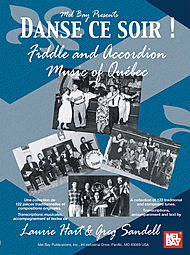
Mel Bay Danse Ce Soir: Fiddle And Accordion Music Of Quebec Book/CD Set
Though relative newcomers to Quebecois music, Laurie Hart and Greg Sandell have managed to produce the definitive book on this style. It is comprehensive, exhaustively researched, and presented with great care and attention to detail.
The book opens with a detailed and wide-ranging look at the history of Quebecois traditional music, the different types of tunes and dances, the importance of individual style and variation, ornamentation and rhythms. The different instruments are examined; for the fiddle we look at bowings, drones, swing and scordatura. Of particular interest is an analysis of accompaniment styles, which in recent decades have become one of the most exciting features of the music, setting alight and showing off the tunes in an extraordinary way.
The tunes, 122 in all, are grouped by source. Thus in the first section, fiddler Andre Alain is given a brief biography, and ten traditional tunes representing the range of his repertoire, each with notes on origin, structure and performance style. There are 41 artists in this section, chosen to represent all the regions of Quebec, with a total of 84 tunes. We then have tunes composed by eight fiddle players, seven accordionists and four “other instruments”. The appendix includes three transcriptions of accompaniment , illustrating the richly chromatic style which has become commonplace in Quebecois music. It is music of great importance to those passionate about the cultural inheritance, of Quebec, but it has until now been largely aural in its transmission, and the authors have done a great service by so lovingly committing this material to paper; “We hope to give you not just the written tunes at third hand, but access to the living, aural sources of this music” . It is “the first book to bring together so many tunes from such a wide range of styles and sources.”. It succeeds magnificently.
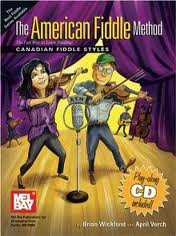
Mel Bay presents American Fiddle Method: Canadian Fiddle Styles
With its unique combination of influences- Irish, Scottish, French, First Nations and American, Canada has a rich and vibrant tapestry of fiddle styles, all too often overlooked by fiddlers elsewhere. This book goes a long way to remedying this situation, not just with a set of tunes, but with an approach which provides the tools for getting the most out of the repertoire and of the Canadian performance style.
The book opens with a description of a little of the history and background to each of the four main Canadian fiddle styles; Old Time Canadian, French Canadian, Métis and Cape Breton. One of the stated aims of the book is to explain how to create variations of the tunes. This is accomplished firstly by providing five pages of ornaments, many of which will be familiar to Irish or Scottish players- the cut, roll, trill and slide, as well as some more distinctive ones such as hammer-ons, pull-offs and ghost notes.
Each of the 28 tunes is presented with basic melody followed by two sets of variations. I think it would be most valuable to master and memorise the first version before moving on to the alternatives. This will help to emphasise how the variation work and how you can come up with your own. The first ten tunes introduce the key ornaments one by one (“ten tunes, ten ornaments”); these are followed by a further 17, carefully chosen to include all the main tune types and to represent the different Canadian fiddle traditions. After the tunes comes a section on how to construct a set or medley, with reference to type and key of the tunes; this is a valuable skill, and something I’ve never before seen explained explicitly in a fiddle book. There is also a set of “exciting endings”- phrases you can use interchangeably to top off a tune or medley.
I found this an engaging, imaginative and authoritative book which goes well beyond simply being a collection of tunes.
Cape Breton Traditional Style Fiddle Sets with Guitar Tablature

by Sandy Macintyre and Leigh Cline (Mel Bay 2011). Reviewed by Chris Haigh for fiddlingaround.co.uk
Fiddler Sandy MacIntyre is a key figure in the traditional music of Cape Breton, as a performer, teacher and writer of tunes, many of which have become standards. Along with guitarist Leigh Cline he presents a collection of tunes widely played in Cape Breton. They are arranged in 21 sets, mostly with 3, 4 or 5 tunes. In traditional “sessions”, tunes are played not separately but in groups, each played two or three times, one running into the next. Thus we have sets of jigs, air to waltz, air to hornpipe, strathspey to reel, or march to strathspey to reel.
Typical Cape Breton fiddle ornamentation is described and explained in the introduction; grace notes, cuts, mordents, turns, drones, double stops, the scots snap ( the trademark rhythmic phrase of the strathspey), and the “up-driven bow”- a down bow followed by three ups. This is a book intended for both fiddle and guitar; each tune is presented for fiddle on the lower stave, and for guitar, there is both tablature on the lower stave and chord symbols/shapes.
The majority of the tunes are of traditional Scottish origin- some by Scott Skinner, such as George Rose Wood of Aberdeen, or Duncan in the Plainstones. A few are well known internationally, such as Stool of Repentance and High Road to Linton, and there are also a good number of Sandy MacIntyre originals. I would have liked to have read in a book like this at least a little of the history and background to Cape Breton fiddling, and its links to Scotland, and something about the authors. Nonetheless this is a fine collection of 78 very playable tunes, useful whether you’re an aspiring Cape Breton musician yourself, or interested in Scottish music in general.
Mel Bay Canadian Fiddle Music, Vol. 1
Mel Bay presents Natalie Macmaster's Cape Breton Island Fiddle
Mel Bay The Fiddle Music of Prince Edward Island: Celtic and Acadian Tunes in Living Tradition
